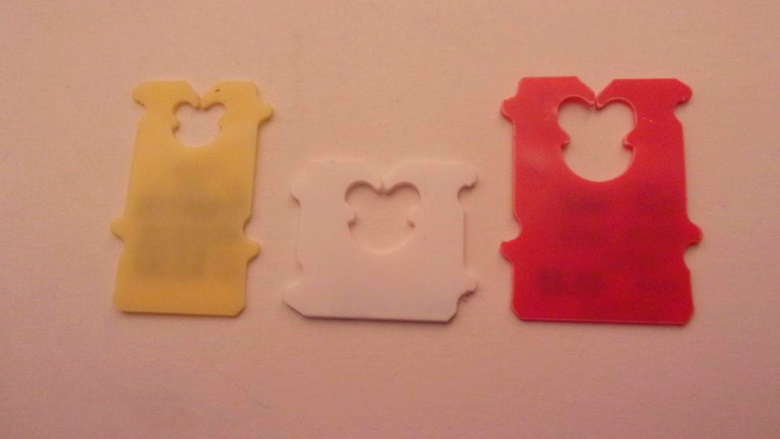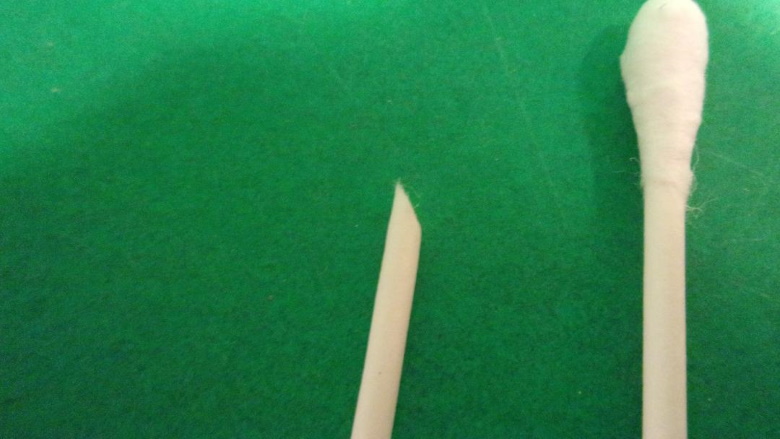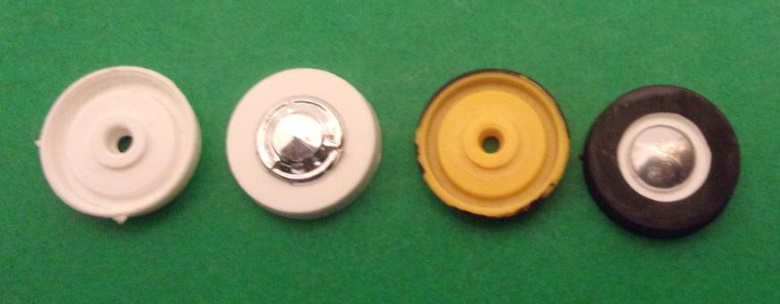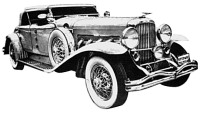Those Plastic Clips
Those plastic clips or tags which are used to seal some loaves of bread, can be handy for spreading putty.
They can also be used when a small piece of plastic is needed for a repair or alteration, so that a large
sheet of styrene doesn't have to be cut. They come in different colors, shapes, and sizes and can be quite
useful.

Q-Tip
The ordinary Q-Tip is a useful tool as it is, but can serve other purposes as well,
once the tips have exceeded their life expectancy. With the tips removed, the shafts can take
on new lives. The plastic shafts can provide a small diameter tube for various modeling applications
limited only by one's imagination. The paper shafts can be cut at an angle with a sharp X-acto or
similar knife, and again used for many purposes such as removing wax from door and trunk lines,
applying a dab of putty or glue, "edging" paint, etc. and the paper (cardboard?) is soft enough
that it won't damage or mar paint.

Windshield Replacement
Having difficulty finding a good windshield to replace a damaged one in a model you're restoring?
Consider reclaiming the damaged one. "Elbow Grease" still works. If the "damage" is glue, and not a crack
or break, the "glass" can possibly be saved, but it will require effort and labor, along with patience.
Though it may seem counter productive, begin by (wet) sanding the affected area with a rough grit of
sandpaper, and in stages gradually continuing with finer sandpaper, until the damage has disappeared,
the "glass" is smooth, but an unappealing haze remains. If you have been patient, and
properly and gradually reduced the abrasiveness of the sandpaper to a very fine grit, the haze should
disappear when waxed.If there are still scratches, wet sand again, until the scratches are gone and
only the haze remains, then wax again. It's a lot of work, but sometimes it's the only viable option
other than the trash can.
Alternative Wheels & Tires
Here's a tip you may never use, but it may be something to be aware of...just in case. If building
or restoring a small scale "something or other", and can't find appropriate small scale wheels and tires,
consider this. There are some 1/24 & 1/25 scale wheel backs which "may" be the correct size to duplicate a
smaller scale (1/32?) tire. Turn the wheel back over, paint the outside flat black, insert a 1/25 scale hub
cap to simulate a 1/32 scale wheel cover and it looks reasonably convincing.

Having difficulty getting a wheel to fit inside a rubber tire?
Try soaking the tire in hot water. This will make the tire more pliable, and
it should then allow the wheel to fit easier.
Having difficulty twisting the cover off of a paint jar?
Try placing the jar under a faucet, and running hot water over the cover. (Remember
science class? Heat expands.) The cap should remove without much effort.
Confused by the various shades of black paint (gloss, flat,
matte, semi gloss)?
Take a piece of scrap white plastic, or a piece of sprue, and dab a sample
of each, (leaving a space in between each) on the plastic, and leave your sample
on your work bench or building table as a reminder. You can refer to it as
you are building a model, to help you determine which shade to use for a given
application. For example, during the "muscle car" era, many cars
had flat black grilles. To simulate the openings in such a grille, one might
use gloss black in contrast to the flat black grille. Gloss black also gives
a realistic appearance to a tailpipe, or carburetor air filter opening; conversely,
flat black may be used to simulate "soot" on the inside of a tailpipe.
EXPERIMENT!
Can't find "glass" for that kit-bashed, scratch built,
or extensively modified model?
Clear sheets of "plastic" are available in various thicknesses from
Plastruct, and Evergreen, and there are other options as well. Plastic used
under shirt collars, or in display packaging of many household, clothing, food,
and scale model (imagine that!) products. For curves and other than flat shapes,
some bubble, or blister, packages work well. Try to find clear plastic (some
appears milky) and remember it can be waxed if needed, to remove scratches.
Have problems installing window "glass" in your models?
Use white glue (Elmer's, Testors, etc.). White glue dries clear, AND, before
it dries, can be removed with hot water.
There is also available a small tool called a "parts placer", which attaches to parts by suction, and enables accurate, relatively hassle free, placement of windows and small parts, keeping glue away from fingers, and fingers out of the way. Check with your local hobby dealer, or order one from us.
|

